Reviews
Alejandro Amenábar
USA / Spain, 2001
Credits
Review by Matt Bailey
Posted on 08 October 2011
Source Lionsgate/Miramax BRD
Categories 31 Days of Horror VIII
I got so excited when I first saw the trailer for Alejandro Amenábar’s The Others in the summer of 2001. I’ve always loved Gothic horror films since discovering Roger Corman’s sumptuous and idiosyncratic Poe adaptations on Saturday afternoon television, and I was equally nuts about Nicole Kidman since her piquant (and yet still underrated) performance in To Die For, so this film held a lot of promise for me. Gothic horror seemed to be on an uptick, a revival spurred perhaps by the critical and financial success of The Sixth Sense in 1999, but the revival already seemed to be foundering. Also in 1999, Tim Burton put out his adaptation of “The Legend of Sleepy Hollow,” - one of the best-looking movies of the 1990s, but with a screenplay that was a total mess—and then of course who can forget The Blair Witch Project - one of the best marketing campaigns of the 1990s for a film that failed to live up to it. In 2000, one of the greatest of modern Gothic horror films, The Exorcist, was re-released in theaters, but with a soundtrack revamped to provoke cheap scares and added scenes that were cut from the original film and really should have stayed cut. That year also saw the release of Robert Zemeckis’ big-budget stink-bomb ghost story, What Lies Beneath. So I was excited by the trailer for The Others not only because the film starred Nicole Kidman, who was, at that time, the most in-demand actress in Hollywood and whose presence in a film granted it some imprimatur of quality, but also because it seemed to evince some narrative and stylistic restraint while at the same time embracing that wonderful cliche of classic Gothic horror, the old creepy house full of ghosts.
The best thing about finally seeing The Others when it opened in August was that I was not disappointed. At long last, the promise of a Gothic horror revival had been fulfilled, and the film was a hit and was collecting awards around the world. I was optimistic that a new wave of well-made haunted house and ghost story films would sweep through cinemas, horror films would once more win Oscars, and maybe even Dario Argento might get the money and inspiration to make something like Suspiria again. But it never happened. Not that it requires mention, but something happened that autumn that reminded us that we have more to fear from our fellow human beings than from old dark houses and malevolent spirits.
While it’s a facile hypothesis that world events shape art and that art reflects our feelings about those events back to us, it’s undeniable that horror movies made and released after September 2001 generally eschew the supernatural in favor man-made scares. The trend that emerged was not Gothic horror but the twinned and intertwined trends of “torture-porn” (the Saw and Hostel films and their ilk) and apocalypse-survival horror (particularly zombie films such as 28 Days Later and the Dawn of the Dead remake). These films concentrated on the evil that humans do to each other and on inscrutable, seemingly-unstoppable threats from the outside, and they have dominated and defined the horror genre for the past decade. Fans of the Gothic have had to make do with a handful of Japanese ghost stories (including Kiyoshi Kurosawa’s chilling Pulse), a couple of visionary films by horror standard-bearer Guillermo del Toro, The Orphanage (a decent del Toro imitation), and - bringing up the rear in more than one way - the Paranormal Activity series.
So the flood of new Gothic horror films that I hoped for was little more than a trickle. And while The Others remains the best film from that trend, it does bear some similarities to the film at the head of that trickle, The Sixth Sense that are worth noting. If the latter film didn’t quite kick off the full-blown revival of Gothic horror I so desired, it did revive another trend: the twist ending. Now, perhaps M. Night Shyamalan was the originator, principal practitioner, and chief befouler of that trend, but for a brief period, twist endings had some novelty. Previously the province of legal thrillers and soap operas, Shyamalan applied twist endings - with greatly diminishing returns and increasing sentimentality - to a number of film genres: horror, superhero, sci-fi, and fairy tale. While it came to be expected in his later films, the twist ending of The Sixth Sense was actually an interesting and quite beautiful way to wrap up what was essentially a Gothic horror film: a delicate child is haunted by the spirits of the dead who seem to want something of him. It’s straight out of “The Turn of the Screw.”
The Others builds upon this foundation by featuring two delicate children seemingly haunted by a family of ghosts, and not just one but two twists in the ending. The magnificence of the screenplay is that these twists don’t make you groan (as did the endings of some of Shyamalan’s later films) but rather deepen the emotion of the film as does the ending of The Sixth Sense. Yet while the end of The Sixth Sense is sad and sweetly romantic, the end of The Others is sad and rather tragic. Both films are steeped in grief, but The Sixth Sense is more about moving on from grief, while The Others is about finding a way to live with it, which is a darker, more truly Gothic (and perhaps more interesting) way to finish a movie. Even knowing the twists, though, does not diminish the genuine goosebumps that the climax of this movie elicits on a repeat viewing.
But allow me to return to one of my original points of fascination in this movie, Nicole Kidman. Since relocating her career to Hollywood from Australia, she had always alternated between roles in expensive trash (Days of Thunder, Far and Away, Batman Forever) and tony literary adaptations (The Portrait of a Lady, Billy Bathgate), it wasn’t until Eyes Wide Shut that she really became an Actress. But Kubrick’s film took so long to shoot that it kept Kidman off cinema screens for another two years after its release. Her return came via The Others.
Starring roles in horror movies are usually pretty showy, what with all the running around and screaming, but that means they are just as usually devoid of nuance. And while Kidman’s first appearance in the film does catch her in extreme close-up in a full-throated scream, she brings a surprising amount of refinement to what could just have been another scream queen role. As a mother raising two fragile children on her own, her character exhibits great strength in the face of some very unusual goings-on (at one point looking a little like a period Ellen Ripley, running around the dark manse blasting at phantoms with a shotgun), but also great vulnerability as her life and family begins to crumble around her, particularly when her presumed-dead husband shows up literally out of the mist, mopes around for a couple of days, and then disappears in the same manner in which he arrived. Kidman’s skillful and emotional performance and Amenábar’s thoughtful script and direction combine to create a film rooted in Gothic tradition yet with enough ingenious genre inversions and modern additions to be relevant to a contemporary audience.
Over the past decade, though, it seems that the reputation of The Others has suffered. Maybe all of the good feelings for Nicole Kidman generated by her extrication of herself from a difficult marriage and by her excellent and Oscar-winning work in several films at the start of the decade have been exhausted by a more recently adopted First-Lady-of-Nashville hauteur and by costly flop (Australia) after costly flop (The Golden Compass) after costly flop (The Invasion) after costly flop (Bewitched). Or maybe the film is simply overshadowed by its progenitor, The Sixth Sense, which has attained the status of modern classic, or by the more malignantly horrific films that have dominated the genre over the decade. Perhaps it will be one of those films that gets forgotten for a while and then rediscovered as a classic by a later generation, or perhaps it will simply be forgotten. I’ll just continue to prize it as one of the gems of recent Gothic horror and one of the best films of 2001 (even allowing for A Beautiful Mind, a spectacular year for films), and I’ll rewatch it every few years and continue to hope for that revival of Gothic horror movies. Hey, that one with the Harry Potter kid looks like it might be okay.
More 31 Days of Horror VIII
-

Westworld
1973 -
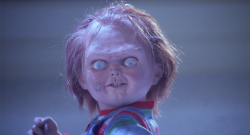
Child’s Play
1988 -
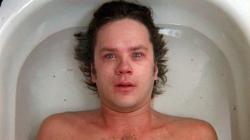
Jacob’s Ladder
1990 -
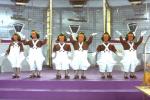
Willy Wonka and the Chocolate Factory
1971 -
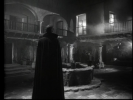
El Vampiro
1957 -
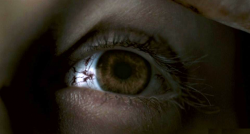
28 Weeks Later
2007 -
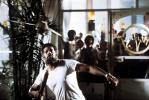
Piranha II: The Spawning
1981 -
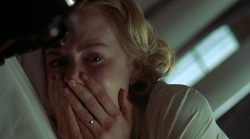
The Others
2001 -
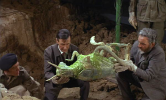
Quatermass and the Pit
1967 -

I Know Who Killed Me
2007 -
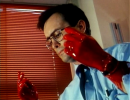
Bride of Re-Animator
1990 -
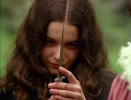
Alucarda
1978 -
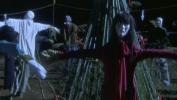
Kakashi
2001 -

Seizure
1974 -
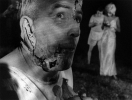
Night of the Living Dead
1968 -
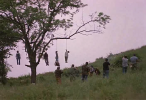
Night of the Living Dead
1990 -
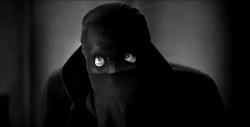
The Bat Whispers
1930 -

Miracle Mile
1988 -

Tintorera
1977 -

Paradise Lost
1996 -
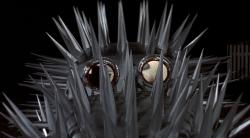
The Cars that Ate Paris
1974 -

Ginger Snaps
2000 -
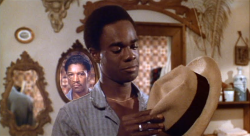
J.D.’s Revenge
1976 -
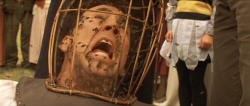
The Wicker Man
2006 -

Black Water
2007 -

Don’t Panic
1988 -
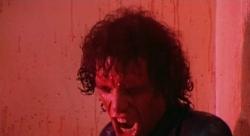
The Driller Killer
1979 -

Targets
1968 -

Mahal
1949 -
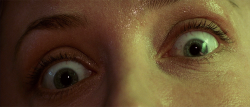
Event Horizon
1997
We don’t do comments anymore, but you may contact us here or find us on Twitter or Facebook.



